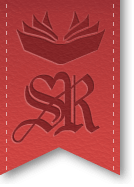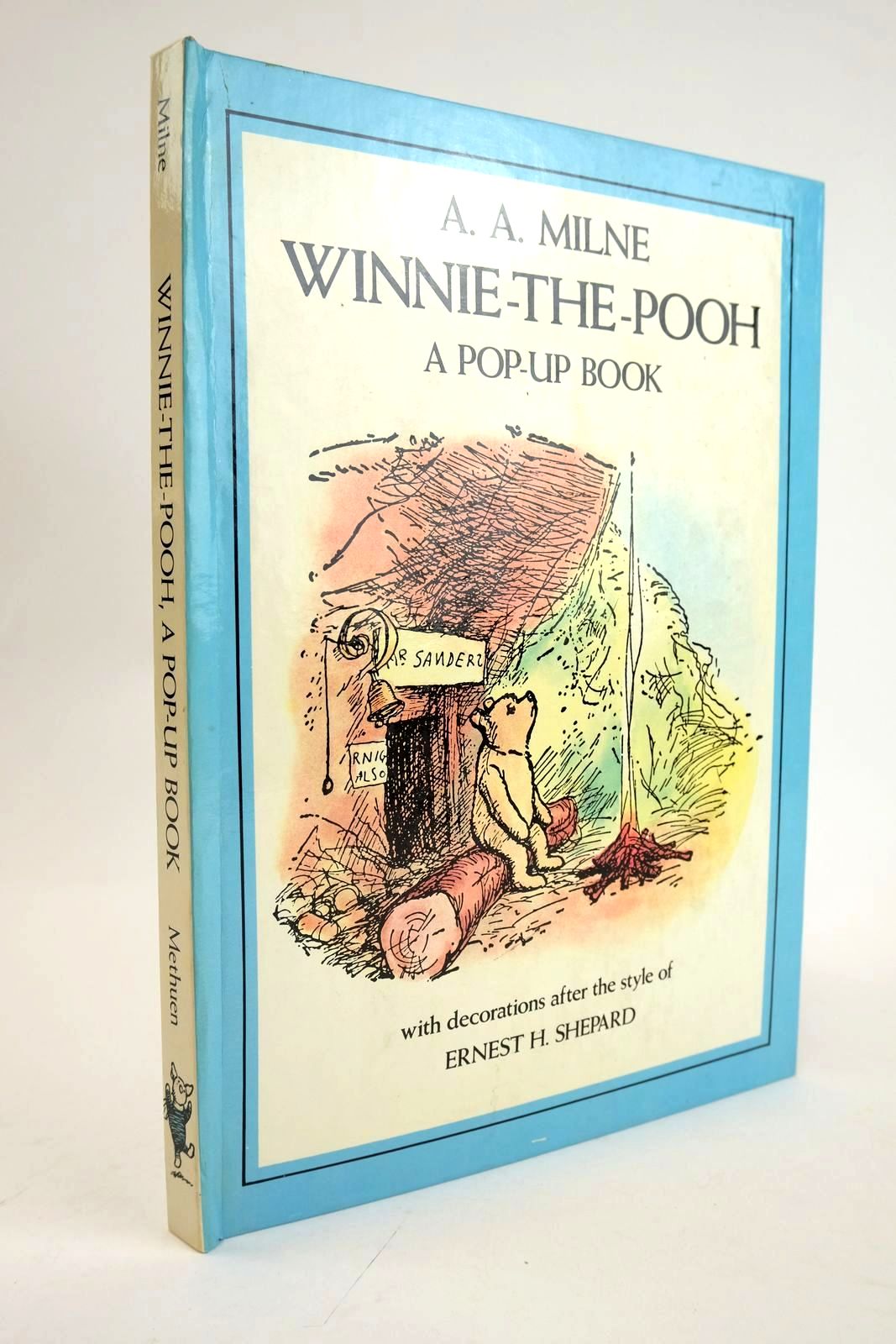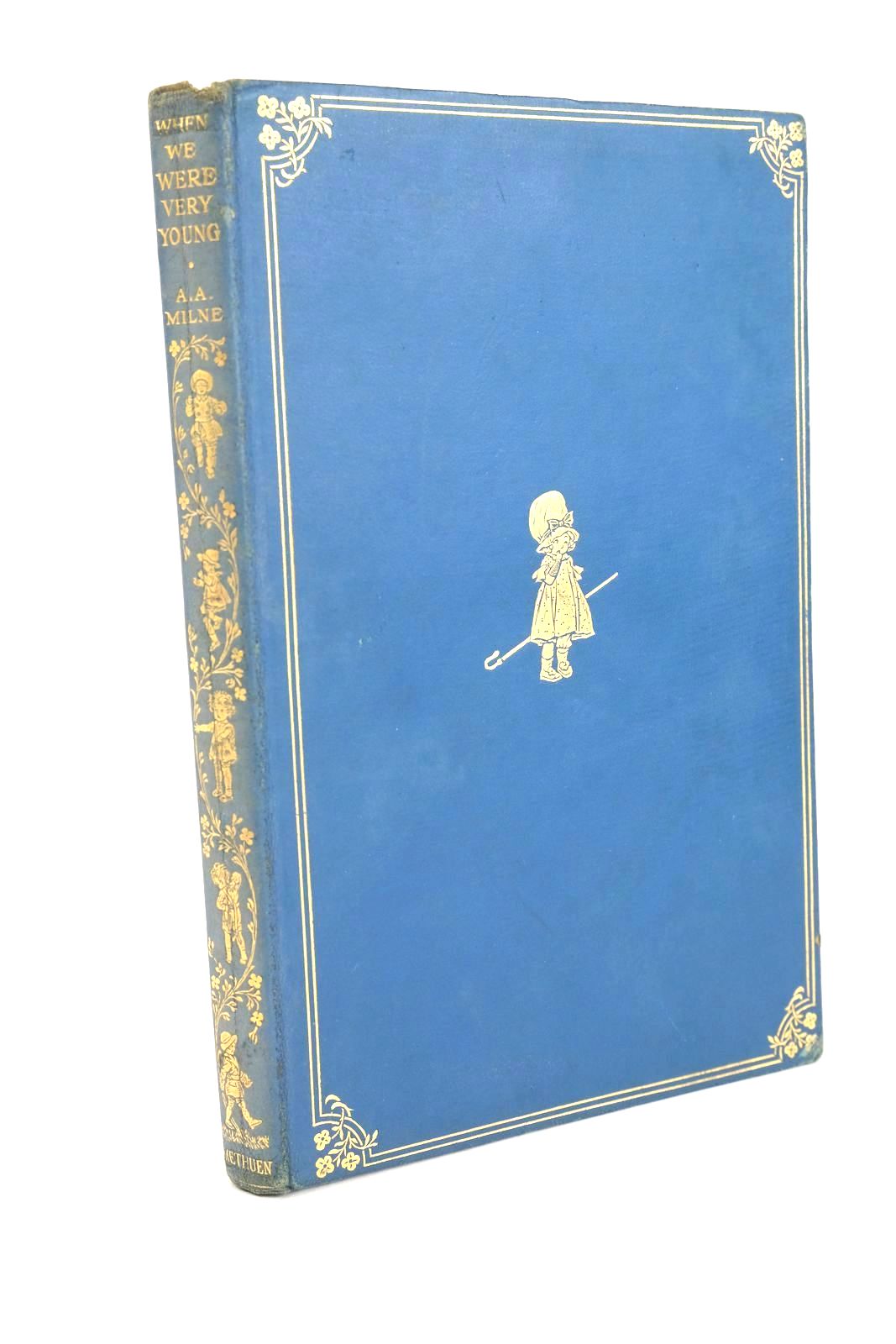When We Were Very Young by A.A. Milne
 View current stock of this title
View current stock of this title
'Little boy kneels at the foot of the bed,
Droops on the little hands little gold head,
Hush! Hush! Whisper who dares!
Christopher Robin is saying his prayers...'
 Those classic lines of children's poetry are to be found on any nursery bookshelf in the book'When We Were Very Young'. Yet, how did the author of detective novels become world famous for a quartet of children's verse and prose revolving around a child and his teddy?
Those classic lines of children's poetry are to be found on any nursery bookshelf in the book'When We Were Very Young'. Yet, how did the author of detective novels become world famous for a quartet of children's verse and prose revolving around a child and his teddy?
Alan Alexander Milne was born in 1882 in London. At a young age he developed an insatiable appetite for reading. In 1903, Milne had his first book published entitled 'Lovers in London'. Later, Milne began to produce a weekly feature for the magazine 'Punch'. After some time, the author decided to stretch his literary muscles by writing plays, some of which were quite successful. Then, in 1922 Milne wrote a detective story entitled 'The Red House Mystery'. This was an instant success and prompted Curtis Brown to contract Milne to write three more novels. Milne was finally realising his dream of becoming a serious dramatist and adult novelist! However, things were about to change...
In 1913 Milne had married Daphne De Selincourt and in 1920 Alan Milne became a father to a baby boy named Christopher Robin Milne, better known as Billy Moon. (Billy being his nick-name and Moon the word that Christopher Robin said when trying to pronounce his own surname!) A year later, the young child was given a teddy bear for his birthday which he named Edward.
In an idle moment, as a gift for his wife, Milne composed a poem entitled 'Vespers'. The poem was an entirely ironic picture of childhood, although considered by some to be either sentimental or controversial. Christopher Robin was just three at the time; although this poem was to stick to him like glue through his life until eventually he grew to detest the words we know so well....
'Little boy kneels at the foot of the bed,
Droops on the little hands little gold head,
Hush! Hush! Whisper who dares!
Christopher Robin is saying his prayers...'
Daphne decided to send the poem for publishing and in 1923 it was printed in 'Vanity Fair'. This entrancing poem was noticed by Rose Fyleman, the then editor of the 'Joy Street ' annual. She encouraged Milne to write another poem for her children's magazine 'The Merry Go-Round'. Although initially reluctant, Milne eventually decided to write the poem and proceeded to write one of his best verses for children, 'The Dormouse and the Doctor'. The proof copy of this poem arrived with Milne whilst on a family holiday in Portmadoc, Wales. The holiday was proving rather a disappointment, with continuous rain and poor company! Although Milne was under pressure to write another detective story, he instead used those damp days to write a marvellous collection of poetry suitable for children. In fact, by the conclusion of the holiday Milne had written about a quarter of the poems that would form the book we know as 'When We Were Very Young'.



When the poems were presented to Methuen they recognised the potential for a splendid book. The verses were remarkable for their technical dexterity and clever use of rhythm and rhyme and the publisher was confident that the book would be successful.
Meanwhile, it was decided that some of the poems should appear in 'Punch' each week along with appropriate illustrations. Milne preferred the popular illustrators of the time, including Alfred Bestall and Harry Rountree. However, E.H. Shepard was suggested by the editors of 'Punch' as he already worked as their cartoonist. The second week that 'Punch' included Milne's verses in their magazine, dated January 16th , 1924, they were accompanied by Shepard's illustrations. The beautiful little sketches were airy and ran wildly around the poem in a most unconventional manner! However, the public loved them and although the author and illustrator never became great friends their future collaboration was guaranteed.
On the 6th of November, 1924, Methuen published 'When We Very Young'. The book contained one hundred pages and included one hundred and twenty eight line drawings by Shepard. The British edition was originally published in a smooth blue cloth with figures of Bo-Peep, the King and John stamped on the front cover, and issued in a cream dust wrapper printed in blue. The endpapers of the book were plain, unlike the reprints which were decorated. Very few genuine 1st editions of this book remain with their dust wrapper and so command a price of several thousand pounds.
By Christmas 1924, Dutton of New York had sold 10,000 copies and Methuen had over 43,000 copies in print. By 1934, just ten years later, over half a million copies had been sold!
Methuen also produced 100 special editions which were produced on handmade paper in a larger format. These were numbered and signed by both the author and illustrator. They have half-maroon cloth and light grey paper boards, with a pale blue dust wrapper. In 2000, this book was estimated to have a value of 6,000 pounds.
Exactly two weeks after the British edition was produced, the American publisher Dutton produced a limited edition of the book in a slightly different presentation. Only 500 copies were produced and 100 of these were signed by Milne. This edition has a cloth spine with attractive pictorial boards and matching dustwrapper. Again, very few of these have survived intact with their original wrapper. Interestingly, in 1974, yet another edition of the book was produced by Methuen , limited to just 300 numbered copies, this time signed by Christopher Milne. Meanwhile, several books were produced in the wake of 'When We Were Very Young', including 'The King's Breakfast' in 1925, 'Teddy Bear and Other Songs from When We Were Very Young' in 1926 and 'More Very Young Songs' in 1928. The books all contain poems from the original volume set to music. All of these books have become collectable in their own right.
In conclusion we can definitely say that true immortality as a literary genius for A.A. Milne was to be from his writings for children not adults, a fact which Milne would live to realise and regret.
(Noteworthy among the verses of 'When We Were Very Young' was the poem entitled 'Teddy Bear' which was based on Christopher's teddy bear, Edward, later to be known as Winnie-The-Pooh. We are told of a short, tubby bear that with hindsight, we know was to have many great adventures. In fact, for those with a snout for teddy bears, they might have snuffled him out on page eighty of the book where Winnie-The-Pooh makes his first ever rather undignified appearance! He also makes one last appearance in the final verse entitled 'Vespers').
View current stock of books by A.A. Milne
Contributed by Claire Waldron
(Published on 17th Dec 2014 )













